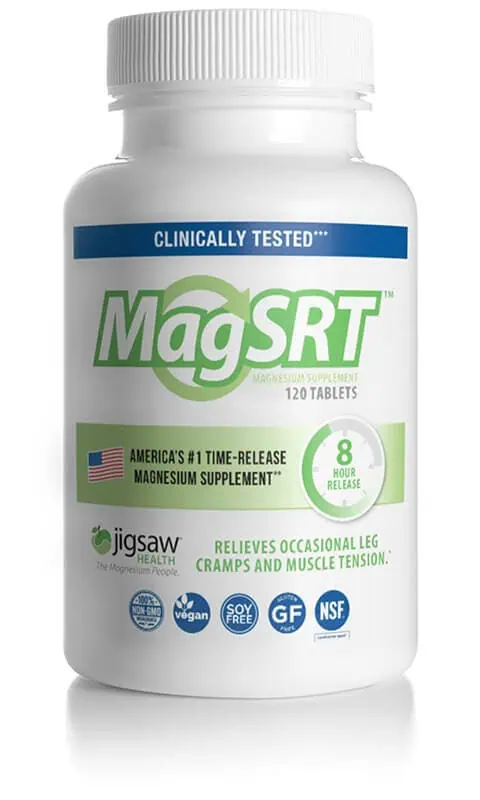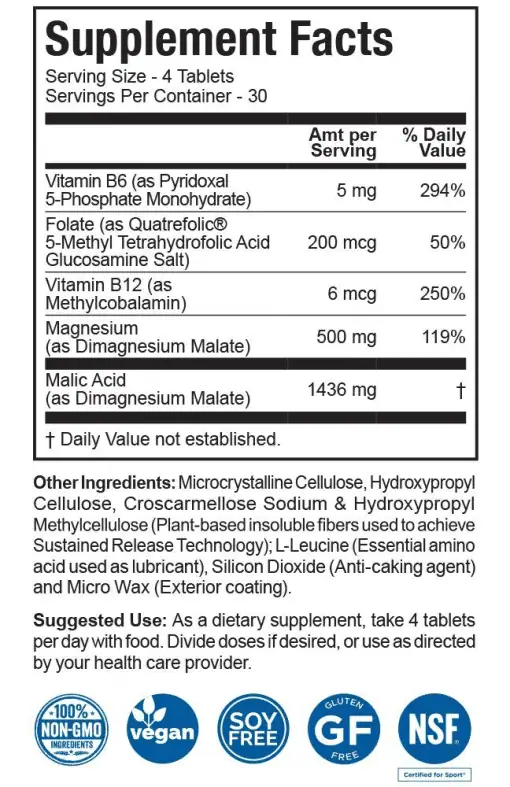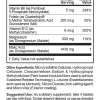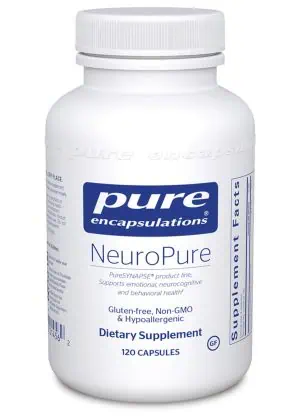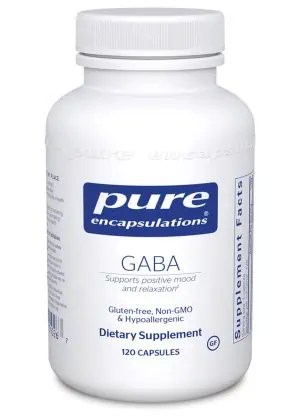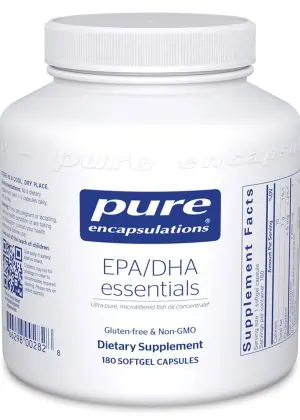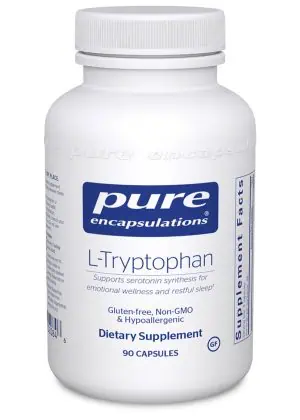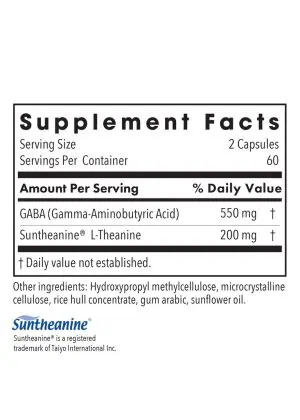Jigsaw Magnesium W/SRT by Jigsaw Health, LLC
Starting at $27.97
Starting at $27.97
Jigsaw Magnesium W/SRT
Jigsaw Magnesium contains 500 mg of Magnesium (as Dimagnesium Malate) per serving.
The “SRT” in Jigsaw Magnesium w/SRT® stands for Sustained Release Technology, and it’s the major difference that gives this product its superior effectiveness. Instead of the magnesium being dumped into your system all at once, SRT slows down the release of magnesium so it’s spread out over 8 hours, which allows your body to absorb the maximum it needs to start feeling your best… without the dreaded digestive discomfort that high doses of regular magnesium supplements can cause.*
Watch Video About JigSaw Magnesium SRT
Jigsaw Magnesium w/SRT contains:
- No artificial colors or dyes
- No casein
- No yeast
- No chemical additives
- No GMO (Genetically Modified Organisms)
- No gluten
- No lactose
- No soy
- No pesticides
- No preservatives
- No carnauba wax
- Vegan Safe
Background Information On Magnesium
More than seventy-five years ago, medical scientists declared magnesium to be an essential nutrient, indispensable to life.
When this mineral is part of your diet, you are investing in cardiovascular health, bone health, and respiratory health, along with supporting healthy energy levels and healthy blood glucose levels. But while research continues to reaffirm magnesium’s irreplaceable contribution to good health, many Americans consistently eat diets that run very low on this mineral.*
Up to 80% of Americans are Running Low on Magnesium… Why?
The simplest answer is that our modern food supply (including organic food) simply doesn’t contain the magnesium it should due to highly depleted soil conditions. Even back in 1915, there were worries about the nutrient quality of the soil, as found in a record of Congressional Testimony. So even if you eat healthy, it is likely that you are running low on this critical mineral.
The impact of deficiency is significant and wide-ranging since magnesium plays a role in over 325 functions in the body. For example, if you are experiencing any of the following quirks, your body may be telling you that it’s craving magnesium:
- muscle twitches and “tics”
- “Charlie horse”
- generally achy muscles
- muscle tone that’s not at its best
- headaches in response to day-to-day stress
- hormonal swings
- compromised energy levels
- high-strung stress response
- constipation
- compromised focus
- slow athletic recovery
- restless sleep
Of course, all these quirks can be indicators of some other health challenge. Always speak to your primary healthcare provider before adding supplemental magnesium, or any other dietary supplement, to your daily health program.*
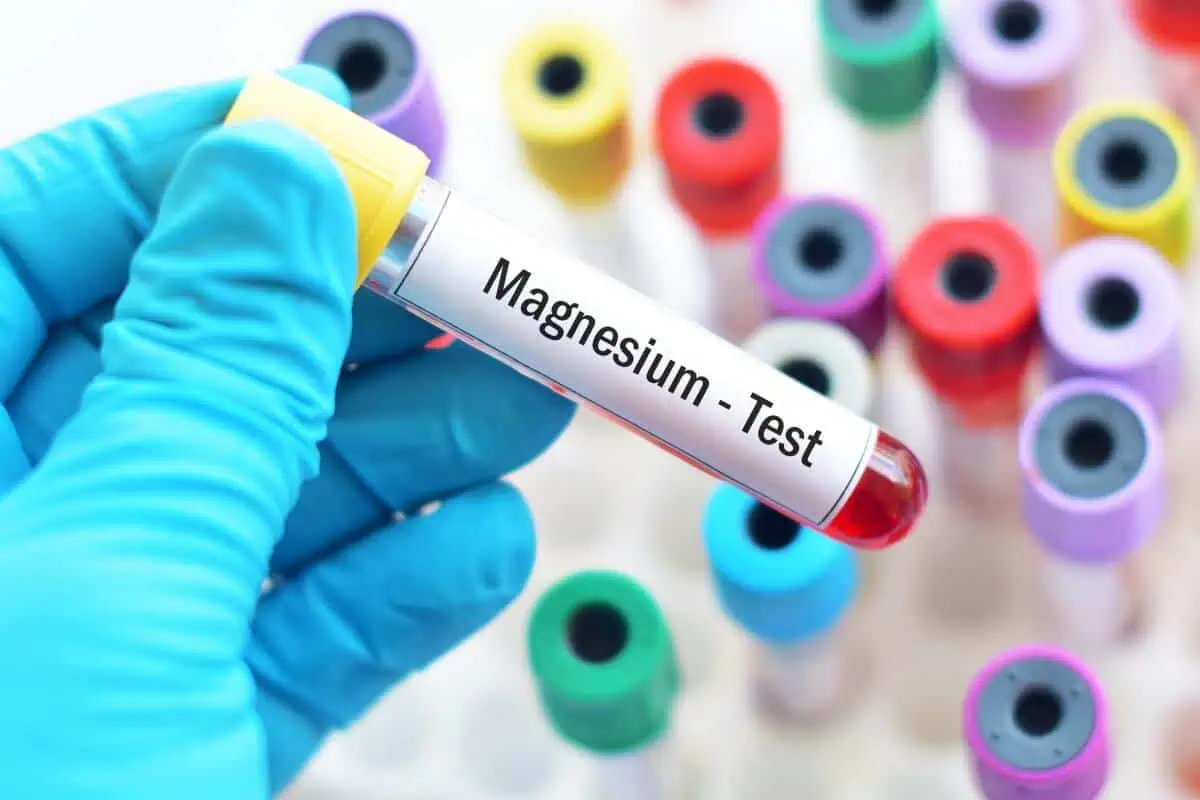
Why Haven’t My Blood Tests Shown That I Need Magnesium?
This is a very valid question. And it has a very logical answer… Approximately 50% of total body magnesium is found in bone. The other half is found predominantly inside cells of body tissues and organs. Only 1% of the body’s magnesium supply is found in blood, and the body works very hard to keep blood levels of magnesium constant. If your body is running low on magnesium, blood levels take top priority and are maintained at the expense of the bones and cells.
Given this, it’s easy to see why blood tests could misrepresent the real status of magnesium levels in the body. Relying solely on blood tests to check magnesium levels — instead of signs of magnesium craving (and the realization that up to 80 percent of the population is running low) — can cause us to miss an important piece in the whole health puzzle.*
What Role Does Magnesium Play in Energy Production?
One of the primary roles of magnesium is to activate adenosine triphosphate (ATP), the energy storage molecule, to create and store energy. Without magnesium, there is no energy. Without energy, there is no life.
What Role Does Magnesium Play in Supporting Muscle Relaxation?
Another important role of magnesium is to work with calcium to help regulate the body’s nerve function and muscle tone. In many nerve cells, magnesium serves as a chemical gate blocker – as long as there is enough magnesium around, calcium can’t rush into the nerve cell and activate the nerve. This gate blocking by magnesium helps keep nerves in a healthy relaxed state.
If your diet provides you with too little magnesium, this gate blocking can fail and the nerve cell can become over-activated. When nerve cells are over-activated, they can send too many messages to the muscles and cause the muscles to over-contract. One often overlooked cause of tight muscles is too much calcium.*
This chain of events helps explain how a magnesium-depleted diet can ultimately lead to the body’s signs of magnesium-craving: muscle tension, soreness, muscle twitches, mild muscle cramps, and overall muscle fatigue especially in the back and legs where some of the body’s largest muscles live.
Top Selling Magnesium
Confused About Magnesium? Get Answers From Dr. Larson
Keep It Real Episode 16: Choosing The Right Magnesium Supplement
Product Ingredients
| Ingredients | AMT | %DV |
|---|---|---|
| Vitamin B6 (as Pyridoxal 5-Phosphate Monohydrate) | 5 mg | 294% |
| Folate (as Quatrafolic 5-Methyl Tetrahydrofolic Acid Glucosamine Salt) | 200 mcg | 50% |
| Vitamin B12 (as Methylcobalamin) | 6 mcg | 250% |
| Magnesium (as Dimagnesium Malate) | 500 mg | 119% |
| Malic Acid (as Dimagnesium Malate) | 1436 mg | - |
Why Buy From Us?As a trusted family- and employee-owned company for over 25 years, we've shipped more than 1 million packages, empowering our customers with expert knowledge, guiding their wellness journeys, while delivering unparalleled customer service.

Welcome to Pure Prescriptions
I founded Pure Prescriptions after overcoming Cancer at age 29, a battle that taught me the power of natural supplements and inspired me to make professional-grade, doctor-only brands accessible online—pioneering the industry over 25 years ago.
Today, still a family- and employee-owned company, we've shipped over 1 million packages, empowering countless wellness journeys with science-backed, U.S.-manufactured vitamins and supplements meticulously curated for superior quality and optimal results. Our real health experts provide personalized recommendations without upsells or gimmicks—just genuine support tailored to your needs.
Not a customer yet? We'd be thrilled to earn your trust and guide you toward vibrant health.
Sincerely,
Helpful Links:
Contact Us | LIVE Chat | Vitamin Quiz
The Pure Prescriptions Difference
When you choose Pure Prescriptions, you become part of our caring community. We’re committed to enhancing your wellness with personalized service, expertly selected products, and a dedication to your health & happiness.


Related products
Get Notified When Back In Stock
Verify you are Human:
-
- Vitamin Quiz
- Deals
- Shop
- Brands
- Shop by Manufacturer Brand
- Shop by Manufacturer Brand
- About
- Login






